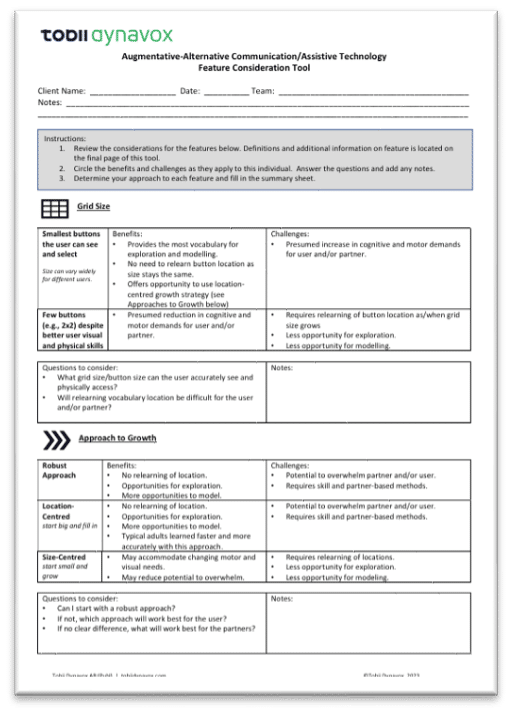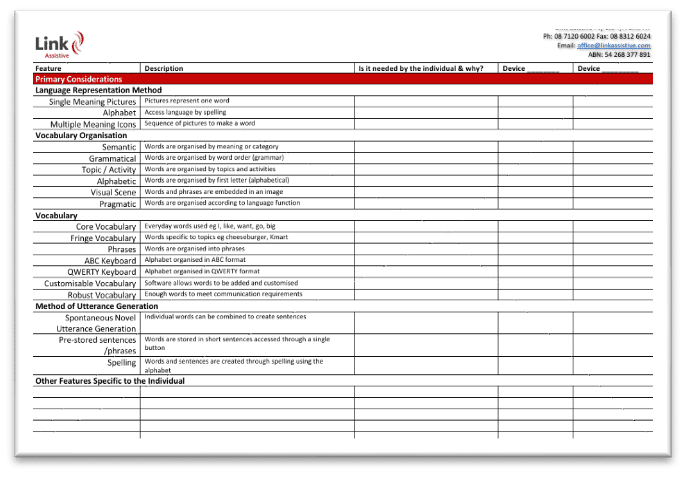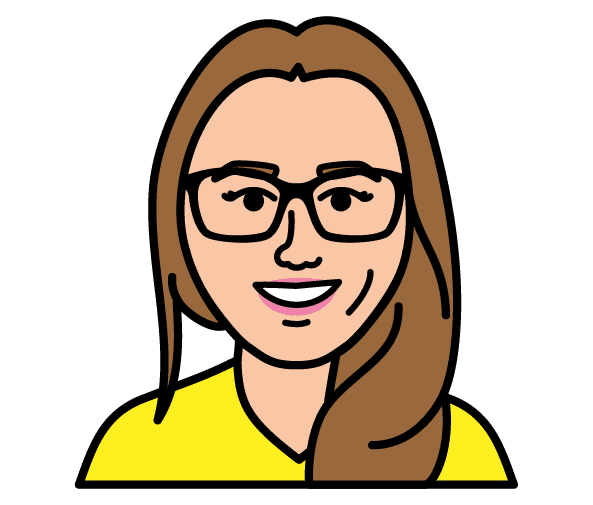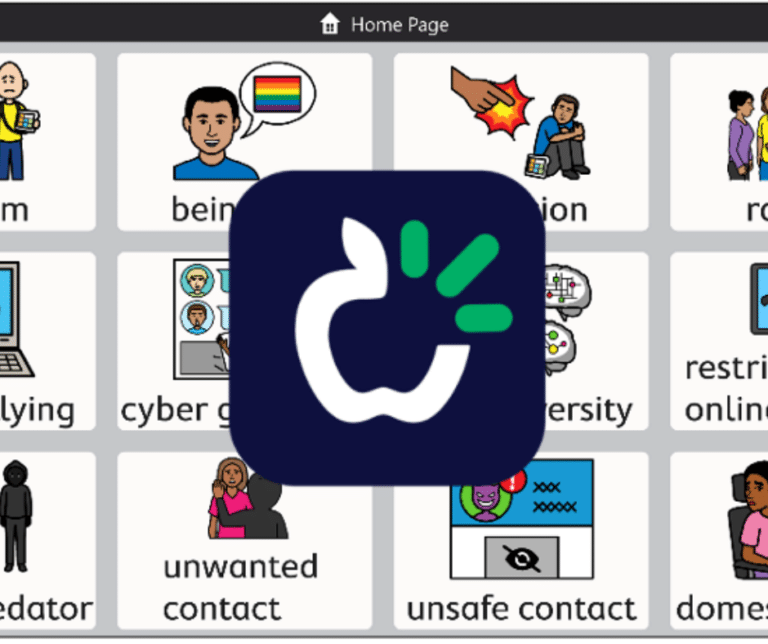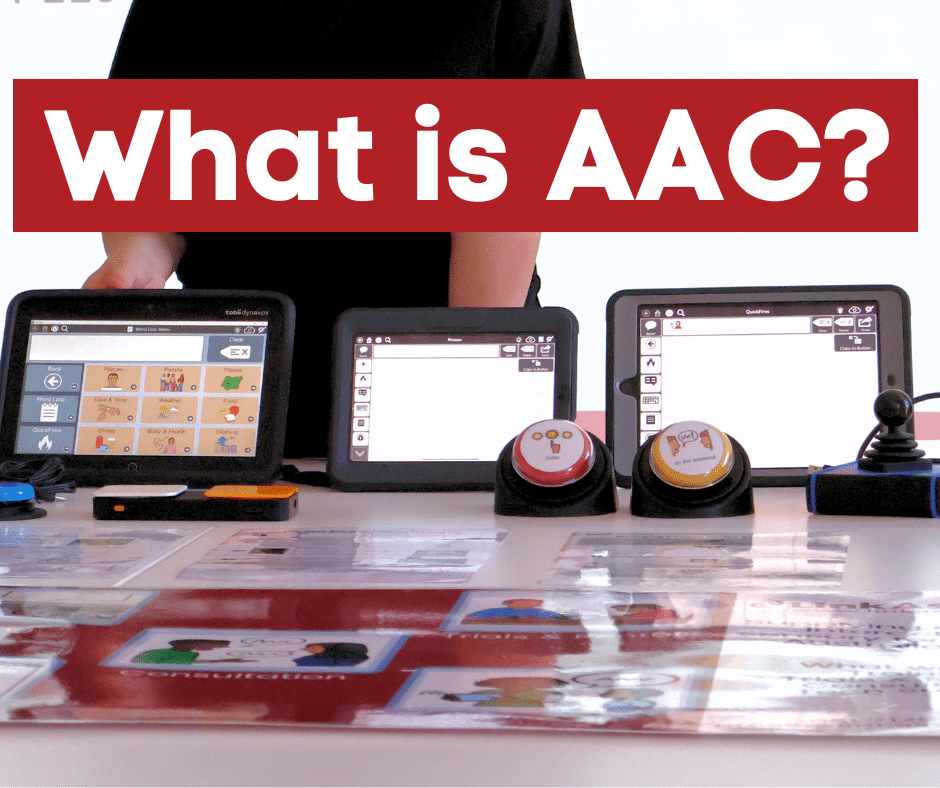
The Role of Augmentative and Alternative Communication (AAC) for People with Communication Support Needs
Augmentative and Alternative Communication (AAC) encompasses a variety of tools and strategies designed to assist individuals who find traditional communication methods too difficult. For people with Communication Support Needs (CSNs), AAC is necessary for clear expression, interaction, and participation in their communities.
This post explores the roles of aided and unaided AAC, the importance of feature matching, and why AAC is regarded as a fundamental human right according to the United Nations Convention on the Rights of Persons with Disabilities (UNCRPD).
Understanding Communication Support Needs
Communication Support Needs (CSNs) refer to situations where individuals require supplementary methods to support or replace verbal speech due to various physical, cognitive, or developmental challenges. CSNs can arise from disabilities such as cerebral palsy, autism spectrum disorders, neurological impairments or progressive neurological diseases. These individuals may struggle with traditional communication methods and thus benefit significantly from AAC systems that facilitate effective expression and interaction.
Types of AAC: Aided and Unaided
AAC systems are broadly categorised into two types: aided and unaided communication.
- Unaided AAC: This form of communication does not require external tools or devices but relies on the user’s own body. Common unaided AAC methods include:
- Gestures: Using hand movements, facial expressions, or body language to convey messages.
- Sign Language/ Key word sign: A structured visual language using hand signs, facial expressions, and body movements.
- Facial Expressions: Utilising expressions to communicate emotions or intentions.
- Body Language: Communicating through posture and movements.
- Unaided AAC methods are often used in combination with other communication modes
- Aided AAC: Aided communication involves the use of external tools or devices to support communication. These can be classified into low-tech and high-tech options:
- Low-Tech Aided AAC: Includes tools such as picture boards, communication books, and symbol cards. These tools require minimal technology and can be customised with pictures, symbols, drawings or text.
- High-Tech Aided AAC: Involves more sophisticated devices like speech-generating devices (SGDs) or commercial tablets with communication apps.
- Aided AAC tools can be particularly helpful for individuals with CSN, offering a structured and accessible means to express thoughts.
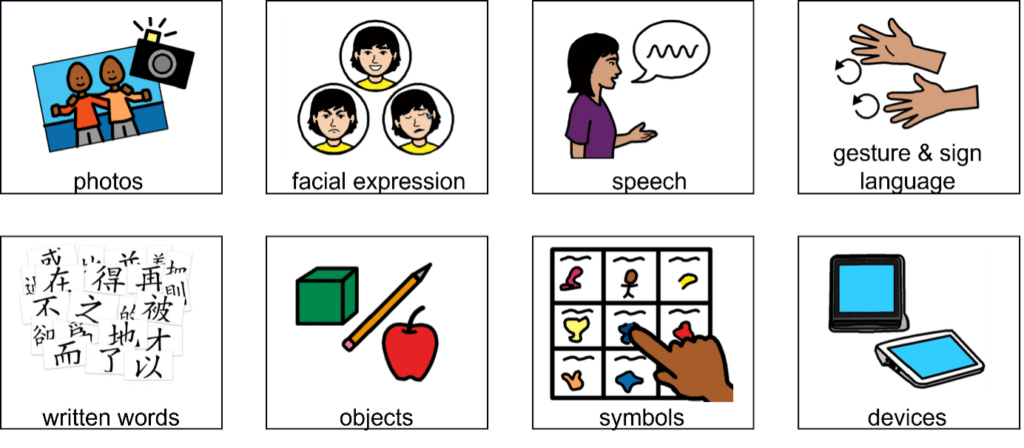
The Role of Feature Matching
Feature matching is a crucial process in selecting the most appropriate AAC system for an individual. It involves aligning the features of the AAC tool/s with the user’s specific needs, abilities, and preferences. Effective feature matching ensures that the chosen AAC system optimally supports the user’s communication potential. This may be a combination of aided and unaided AAC. Some things to consider when feature matching include:
- Customisation: Different AAC systems offer varying features such as vocabulary sets, symbols, and input methods. Feature matching ensures these features align with the user’s cognitive abilities, motor skills, communication goals and their environment.
- User Engagement: A well-matched AAC system is more likely to engage the user. When the system is intuitive and suited to their needs, users are more motivated to use it consistently, leading to better communication outcomes.
- Skill Development: Proper feature matching provides tools that are both challenging and achievable, helping users build confidence and competence in their communication abilities.
- Long-Term Success: As users’ needs evolve, feature matching can be adjusted. This adaptability ensures the AAC system continues to meet changing requirements over time.
You can access our Link Assistive feature matching tool here. And another feature matching tool from Tobii Dynavox here
Why AAC is a Human Right
The use of AAC is considered a human right for several reasons, as outlined by the United Nations Convention on the Rights of Persons with Disabilities (UNCRPD):
- Access to Communication: Communication is a fundamental human need and right. Everyone should have the opportunity to express themselves, make choices, and participate in societal activities. AAC ensures that individuals with communication impairments can exercise this right.
- Equal Participation: Article 21 of the UNCRPD emphasises the right of individuals with disabilities to enjoy the same access to information and communication as others. AAC is a crucial tool in achieving this, enabling people with Communication Support Needs to engage in education, work, and social activities on an equal basis.
- Empowerment and Dignity: Effective communication is essential for maintaining personal dignity and autonomy. AAC provides a means for individuals to assert their identity, preferences, and needs, thereby supporting their overall well-being.
- Legal and Ethical Considerations: Many countries have incorporated the principles of the UNCRPD into their legislation, recognising the right to communication as a fundamental aspect of human rights. Ensuring access to AAC aligns with legal and ethical obligations to support individuals with disabilities in realising their full potential.
The Communication Bill of Rights was created to remind us all that communication is a basic human right. It was put forward in 1992 by the National Joint Committee (NJC) for the Communication Needs of Persons with Severe Disabilities. This document outlines 15 communication rights.
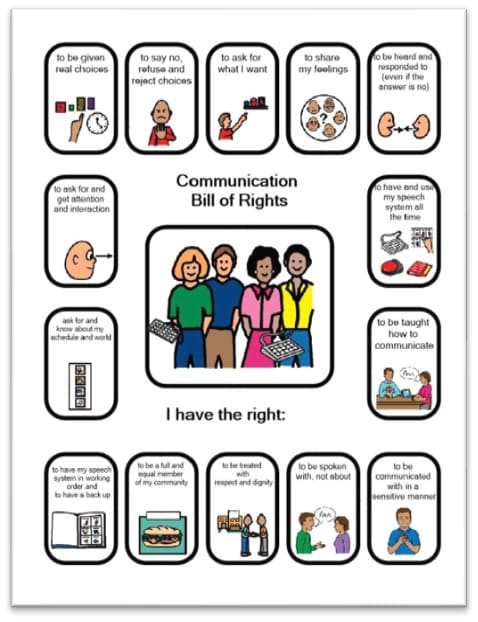
This PCS version was created by Ms Peterson, SLP, based on the work of Kate Ahern
In summary, AAC plays a vital role in the lives of individuals with communication support needs by enhancing their communication abilities and ensuring their rights to participate fully in society.
Whether through aided or unaided methods, AAC systems are crucial for effective communication. Feature matching ensures that these systems are tailored to individual needs, optimising their effectiveness. By providing these tools and ensuring their accessibility, we uphold the dignity and autonomy of all individuals, affirming their fundamental human rights.
